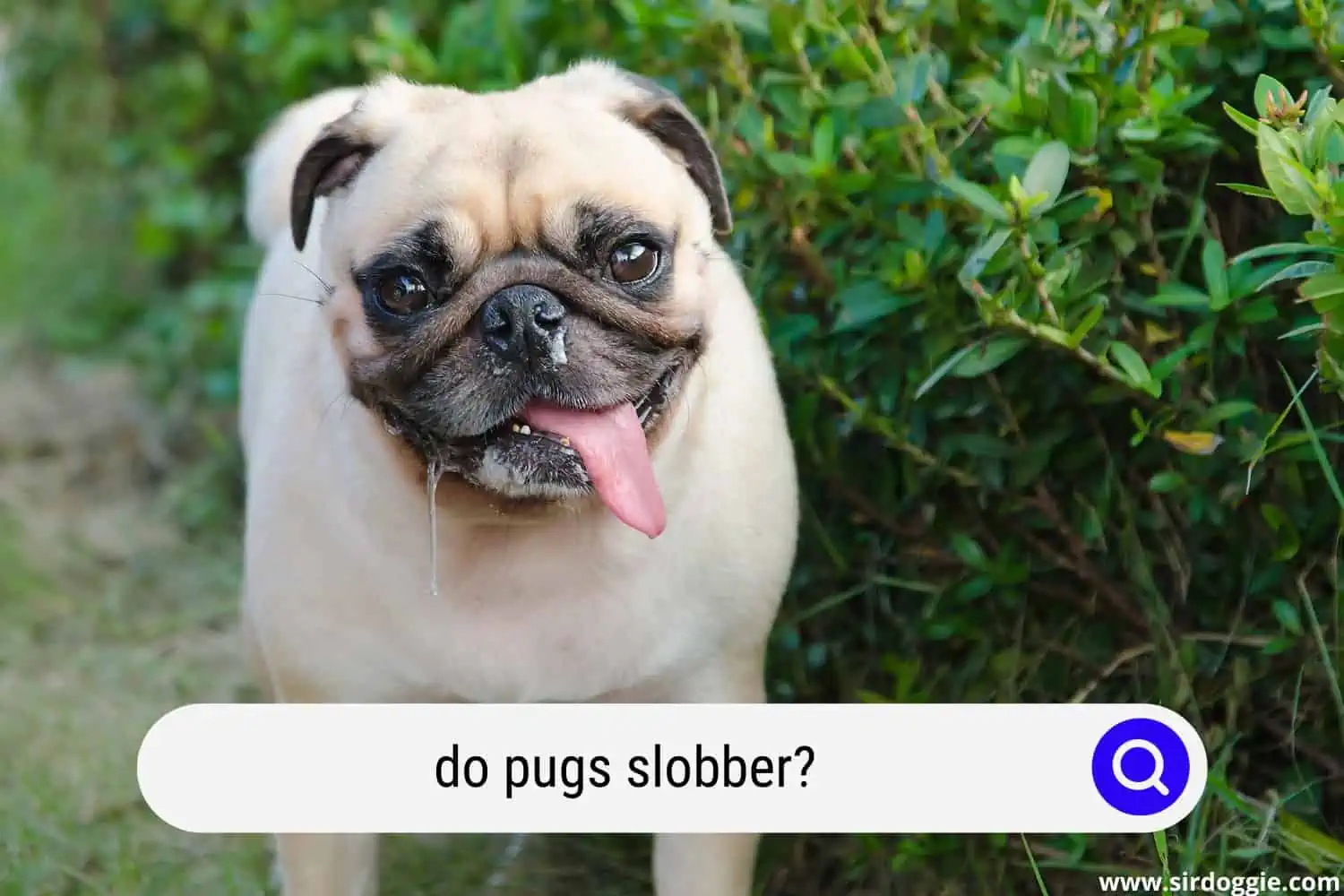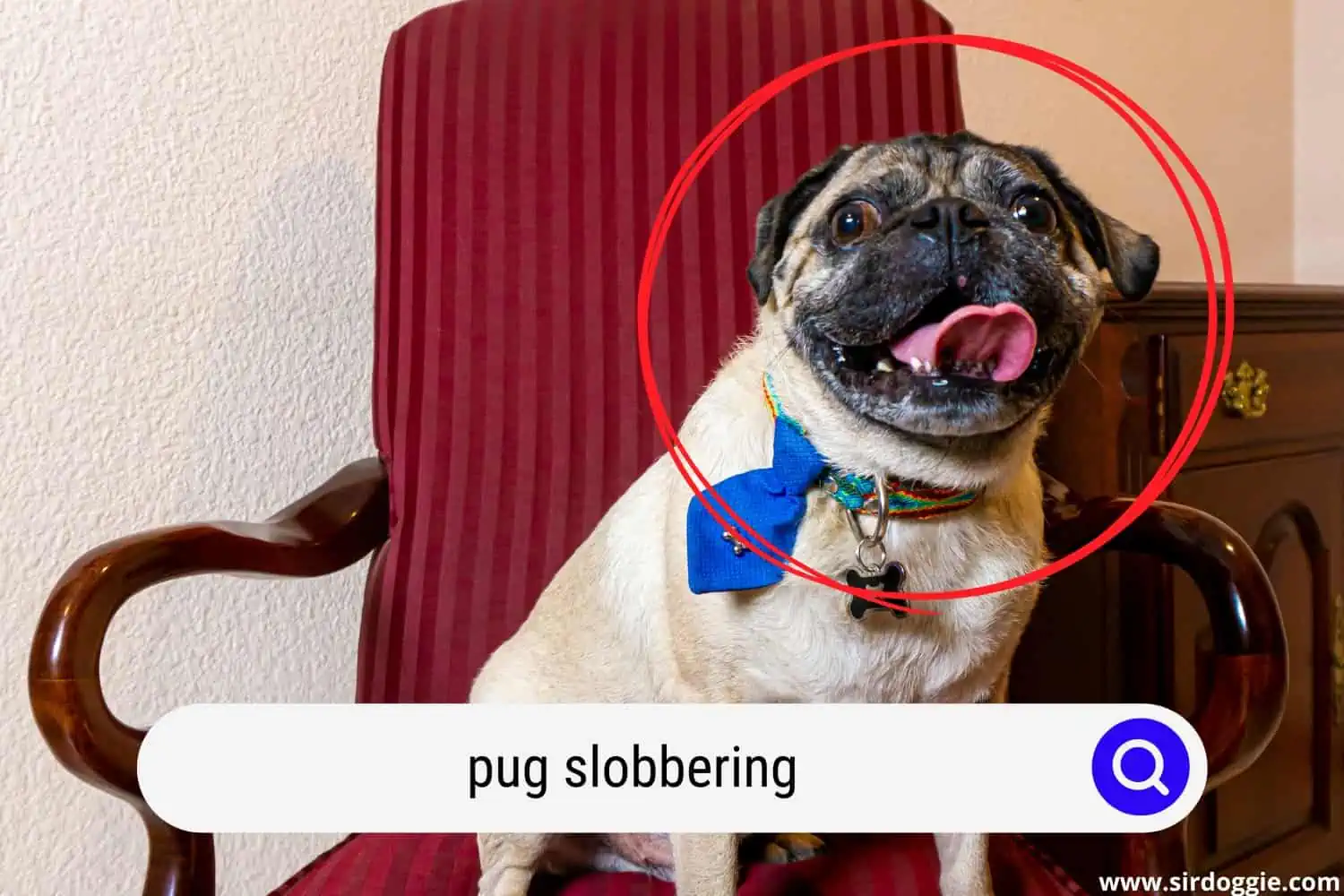Do Pugs Slobber? 8 Reasons Why Canines Do That
Have a canine friend in your household? Then you know a thing or two about saliva all over the place: furniture, floors, carpets, and even your favorite fuzzy slippers! There are different reasons for this occurrence, and not all of them are alarming.
It is a part of a dog’s DNA, like eating and sleeping for humans. Some breeds are prone to excessive slobbering more than other breeds. In case you happen to have a wrinkle-faced pal, you may be wondering how bad the drooling situation is with Pugs. Do Pugs slobber at all? And if so, why?

Do Pugs Slobber?
The answer would be yes, they do, like any other canine out there. Their skull shape contributes to the over-the-top drooling that they may experience. Pugs are considered brachycephalic.
This is a common condition when breathing gets obstructed by the peculiar facial features shape. Therefore, to help themselves breathe better, wrinkled buds often walk around the house with their mouths open, while panting heavily. Especially during the hotter months. Once spring and summer come, our cute flat-faced creatures suffer from the heat and are often dehydrated.
Saliva production aids in staying cool and regulates body temperature. This, in return, prevents a hot pal from getting a stroke. Why else do Pugs drool? Let’s take a look at the most common reasons.
Related Reading: A Pug Is Not Eating and Lethargic: 9 Main Reasons Why It Happens
Why is My Pug Drooling?
It is Hungry
A very common occurrence among our four-legged friends. More so when it comes to Pugs as they love food! Sometimes to the point of obsession.
Hence they have to watch portions to stay away from extra weight gain. If you have heard of the Russian Scientist Pavlov and his theory of conditional reflex, you know that dogs start drooling at the very smell of food and/or a particular trigger indicating that mealtime is coming.
Old or Rotten Food
Surprisingly, pets’ response to stale food is salivating. So, not only do they drool if they smell something delicious, but also if it’s something distasteful. Why is that?
The explanation is simple: a dog tries a rotten piece of food and its body is trying to get rid of the bad aftertaste by producing extra saliva. It is very similar to humans rinsing their mouths if they don’t like something they eat. Since pooches cannot rinse for obvious reasons, slobbering is their way of cleaning their mouth cavity.
Motion Sickness
Yep, pets can get car or seasick just like us! Pretty interesting, isn’t it? Just another proof that canines get the same type of ailments that two-legged mammals get.
Some dogs become very scared while in a moving vehicle, be it a car or a boat. Pugs are no exception to this rule and tend to be even more anxious compared to larger canine breeds. Their response to fear is drooling all over your back seat and/or vomiting.
Slobbering is like a “pre-requisite” for puking, therefore you better invest in a waterproof seat cover.
Teething
Young pups may be in pain while their baby teeth give way to an adult set of fangs. Hence an owner may see extra drooling while this exchange process takes place. Salivating helps soothe irritated gums and stop excessive bleeding as well.
If you want to assist your pup in its ordeal, you may want to invest in a puppy-approved chew toy. It can come in handy and re-direct your wrinkled pal’s attention from pain to the chewing reflex. Bonus for a toy’s squeakiness!
Ate Something Spicy by Accident
As the two-legged start building extra saliva if they are eating hot foods, canines experience the same thing. In case they grabbed something spicy by mistake thinking it was eatable, an owner may notice how all of a sudden his/her Pug is drooling excessively everywhere. That’s a canine body’s response in an attempt to cleanse itself of the unwanted taste.
Illness
It could be anything from an upset stomach to rabies. Pugs start salivating in response to a hurting tummy after eating a product they are not supposed to. In the case of rabies, sometimes an owner may notice his/her pup starts shaking, experience convulsions, and/or exhibit “mad dog” behaviors.
Some of them will include jumping up and down, rolling around as well, and suddenly attacking for no reason. Compared to the other aforementioned pooch slobbering examples, this one is an abnormal drooling situation. It is better to address it with a veterinary specialist ASAP.
Overexcitement
Did you recently get a chew toy for your tough wrinkled chewer or that bag of its fave treats? Your Pug can get overly happy and start running around like crazy in anticipation, unable to contain itself. All this excitement can be easily accompanied by drooling.
Remember the paragraph where we discussed Pavlov’s conditioning reflex? That can be put in the same category: a fluffy bud sees something it wants and your floor suddenly becomes a pool of dribble.
Sleeping
Humans do slobber also while asleep. I woke up many times in the morning and noticed wet spots on my pillow. That’s because people often open their mouths while catching zzz’s to relax more.
It is a very common occurrence among side and stomach sleepers. Well, furry creatures are the same way! Do Pugs slobber when they sleep? Absolutely!
When they are super relaxed, it gives way to the overproduction of drool. In case their saliva stains your bed or a favorite couch, you might want to get a removable waterproof, easy-to-clean cover that you can put on top of their bedding. Don’t forget to wash it once in a while if it’s heavily soiled.

Curl-Up
We have just covered eight valid reasons for the canine salivating experience. Most of them are completely harmless and an owner shouldn’t worry upon noticing such a phenomenon. However, if a parent spots that his/her pooch drools more than normal, and it is accompanied by seizures, vomiting, diarrhea, as well as heavy panting, it may be a good idea to pay a visit to a local veterinary specialist. He/she will have to perform all the necessary tests to get to the bottom of the issue.
Related Reading: Can Pugs Be Aggressive? Most Common Reasons For Pug’s Fighting Tendencies

Family Dog Expert Author
Hi there! I’m Stuart, a devoted dog lover and family dog expert with over a decade of experience working with our furry companions. My passion for dogs drives me to share my knowledge and expertise, helping families build strong, loving bonds with their four-legged friends. When I’m not writing for SirDoggie, you’ll find me hiking, playing with my beautiful dog, or studying music.